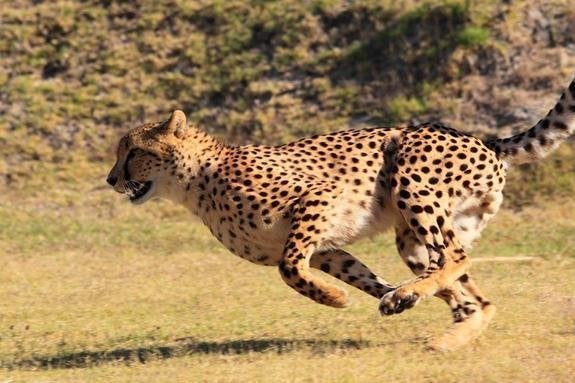
It was puzzling. The cheetahs that were arriving in my clinic and observing in the field seemed to have an unusual number of eye injuries. For a predator that relies on keen eyesight and bursts of speed to hunt and survive, an eye injury can be a death sentence.
Upon investigation, I discovered that the eye injuries were caused by overgrown thornbush, an invasive plant species that takes over in land areas due to poor farming practices. Bush encroachment not only reduces the available range land for cheetahs, but also for the prey species they feed on as well as domesticated livestock. Cheetahs attempting to run through the thick bush in pursuit of prey injured themselves, sometimes seriously. Bush encroachment not only affects the cheetah, but the Namibian economy as well.
With the help of a USAID grant, I launched a study a decade ago to address the issue of overgrown thornbush. Selectively harvesting the bush and processing it yielded approximately 10 tons per hectacre of biomass material. CCF created an environmentally friendly high heat low emission fuel log called Bushblok from the harvested bush. We built a plant and began selling the fuel logs. In 2008 BUSHBLOK won the Intel Tech Award Prize for the Environment. A short video is available here.
In 2006, our Bushblok Company obtained certification from the Forest Stewardship Council, confirming that CCF manages forest resources responsibly and sustainably. The project currently employs 30 Namibians.
In 2010 I was awarded the Tyler Prize for the Environment for my approach to habitat restoration. The Tyler Prize for Environmental Achievement is the premier award for environmental science, environmental health and energy conferring great benefit upon mankind. I received this great honor for my eco-system-based approach to sustainable management of landscapes, using the knowledge and economic interests of the local population, and thereby also supporting the continuation and survival of the cheetah.
Expansion of the biomass fuel industry in Namibia addresses two problems that are rampant in Africa. The first is poverty. Namibia has 50% unemployment. As the biomass industry grows hundreds of entry-levels unskilled jobs could be created, and hundreds of hectacres of land restored to productive use, alleviating poverty in the region.
The second problem is availability of electric power. Across Africa, the demand for electric power has outstripped the capacity to produce it. Namibia's electric utility, NamPower, is estimating a power deficit of over 150 Megawatts by the end of 2013. The demand for energy sources that produce safe, clean and sustainable power has increased over the last decade and will continue to grow. Expanding our biomass program to create fuel for power plants could provide a renewable, cleaner burning alternative to Namibia's dependence upon coal and diesel fuels.
Namibia has over 100 million tons of unwanted biomass ready to be harvested and used to create fuel logs, clean energy and much-needed jobs. Sub-Saharan Africa has many countries that are arid and overgrazed, leading to bush encroachment. Many of these countries are cheetah-range countries with CCF outreach programs in place. Our biomass program can be replicated in other countries.
CCF Bushblok project represents a unique opportunity to restore grasslands for livestock and wildlife and to play a part in addressing some of Namibia's and Africa's biggest issues. I see the cheetah sprinting into the future, leading the way towards a better environment for people and wildlife.
